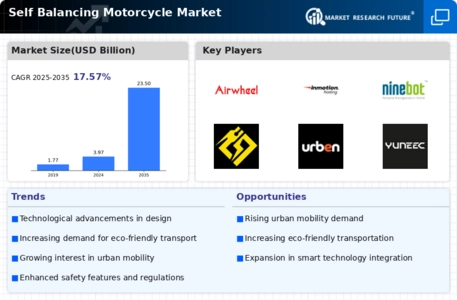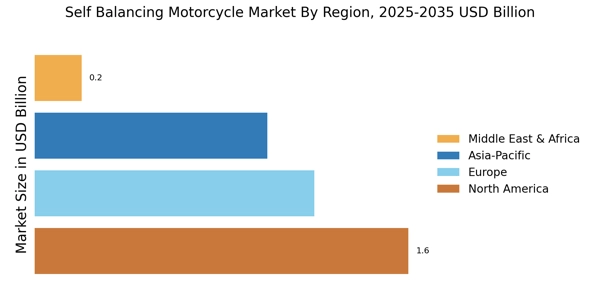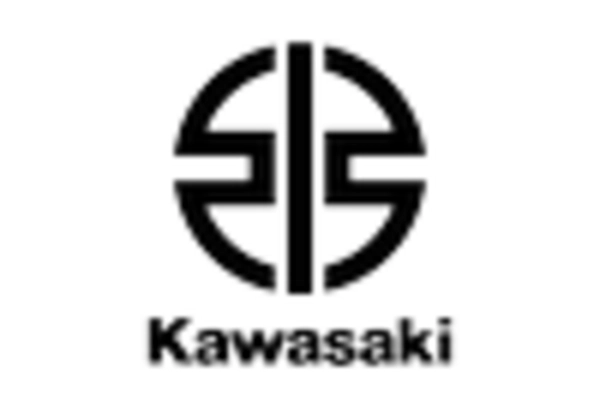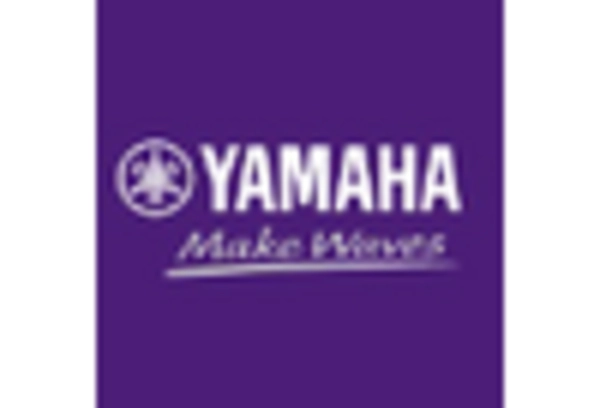Increased Focus on Safety Features
The Self Balancing Motorcycle Market is witnessing an increased focus on safety features, which is becoming a key driver of market growth. With rising awareness of road safety, consumers are prioritizing motorcycles that offer enhanced protective measures. Self balancing motorcycles, equipped with advanced stability control systems and anti-lock braking systems, are perceived as safer alternatives to conventional motorcycles. Market Research Future indicates that safety features can influence purchasing decisions for up to 70% of potential buyers. As manufacturers respond to this demand by integrating more sophisticated safety technologies, the Self Balancing Motorcycle Market is likely to expand, attracting a broader audience concerned with rider safety.
Urbanization and Traffic Congestion
The Self Balancing Motorcycle Market is significantly impacted by the ongoing trends of urbanization and traffic congestion. As more individuals migrate to urban centers, the demand for efficient and compact transportation solutions rises. Self balancing motorcycles provide an agile alternative to traditional vehicles, allowing riders to navigate through congested streets with ease. Recent statistics suggest that urban areas are expected to see a 30% increase in motorcycle registrations over the next decade, driven by the need for practical commuting options. This trend not only boosts the appeal of self balancing motorcycles but also encourages manufacturers to tailor their offerings to meet the specific needs of urban commuters.
Government Initiatives and Regulations
The Self Balancing Motorcycle Market is also shaped by government initiatives and regulations aimed at promoting innovative transportation solutions. Various governments are implementing policies that encourage the adoption of electric and self balancing vehicles through incentives and subsidies. These initiatives not only support the development of the self balancing motorcycle segment but also create a favorable regulatory environment for manufacturers. Data suggests that regions with supportive policies are experiencing a 25% faster growth rate in motorcycle sales compared to those without such measures. As governments continue to advocate for sustainable and efficient transportation, the Self Balancing Motorcycle Market is poised for substantial growth.
Rising Demand for Eco-Friendly Transportation
The Self Balancing Motorcycle Market is increasingly influenced by the rising demand for eco-friendly transportation solutions. As urban areas grapple with pollution and traffic congestion, consumers are seeking alternatives that minimize their carbon footprint. Self balancing motorcycles, often designed with electric propulsion systems, offer a sustainable mode of transport that aligns with environmental goals. Market analysis indicates that the electric motorcycle segment is expected to grow at a compound annual growth rate of 20% in the coming years. This shift towards greener options not only enhances the appeal of self balancing motorcycles but also positions the industry favorably within the broader context of sustainable mobility initiatives.
Technological Innovations in Self Balancing Motorcycles
The Self Balancing Motorcycle Market is experiencing a surge in technological innovations that enhance rider safety and comfort. Advanced sensors, gyroscopic stabilization, and artificial intelligence are being integrated into motorcycle designs, allowing for improved balance and control. These innovations not only attract tech-savvy consumers but also appeal to those seeking safer riding experiences. According to recent data, the incorporation of smart technologies in motorcycles is projected to increase market demand by approximately 15% over the next five years. As manufacturers invest in research and development, the Self Balancing Motorcycle Market is likely to witness a proliferation of models equipped with cutting-edge features, thereby expanding consumer choices and driving overall market growth.


















Leave a Comment